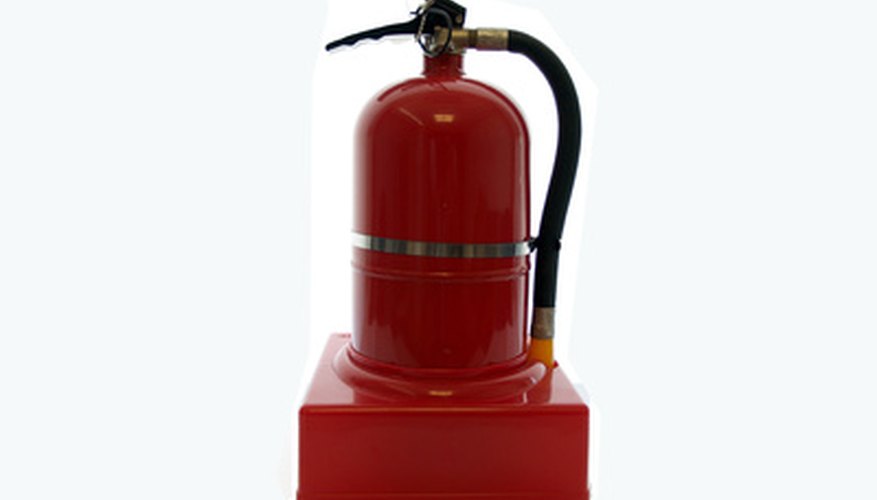A fire extinguisher is a device which is used to extinguish or control small fires. They are intended only for use with manageable fires. Fires that have escalated out of control or compromised a building's structural integrity are best left for trained professionals. There are different types of fire extinguishers to be used in different situations, and inappropriate usage can have fatal consequences.
Too Heavy
Conduct an assessment to identify potential fire hazards, which will determine the type of fire extinguisher you need. A fire extinguisher must match the class of fire that is most likely to occur. Fires are classified into four classes---A, B, C and D---depending on the fire's average size and how fast it usually spreads. The rating for each class is printed on the extinguisher's label; the higher the rating, the heavier the extinguisher. Class A fires are rated from 1 to 40, class B fires are rated from 1 to 640. The extinguishers rated for home and office use are rated 2A:10B:C. Assess the physical abilities of those likely to handle the extinguishers in a fire emergency and choose an extinguisher that they can lift. Choosing the wrong fire extinguisher may prevent someone from using it safely and efficiently, resulting in injury and spread of fire.
- Conduct an assessment to identify potential fire hazards, which will determine the type of fire extinguisher you need.
- The extinguishers rated for home and office use are rated 2A:10B:C. Assess the physical abilities of those likely to handle the extinguishers in a fire emergency and choose an extinguisher that they can lift.
Wrong Chemicals
Fires that are the result of flammable liquids such as gasoline, oil, grease, tar, oil-based paint, lacquer and flammable gas are called flammable liquid fires and are classified as class B fires. Fires that burn easily and are as a result of ordinary combustibles such as, wood, cloth, rubber, plastics and other common materials are class A fires. Using water-based fire extinguishers---meant for class A fires---on flammable liquid fires can actually cause the fire to fare up and spread, causing serious injury or death and further damage to property.
Electric Shock
Halon 1211, or bromochlorodifluoromethane extinguishers, are the designated extinguishers for Class B and C fires. The use of pressurised water extinguishers on such fires can result in serious electric shock because class C fires come from electrical equipment such as wiring, fuse boxes, circuit breakers, machinery and appliances which cannot come in contact with water.
